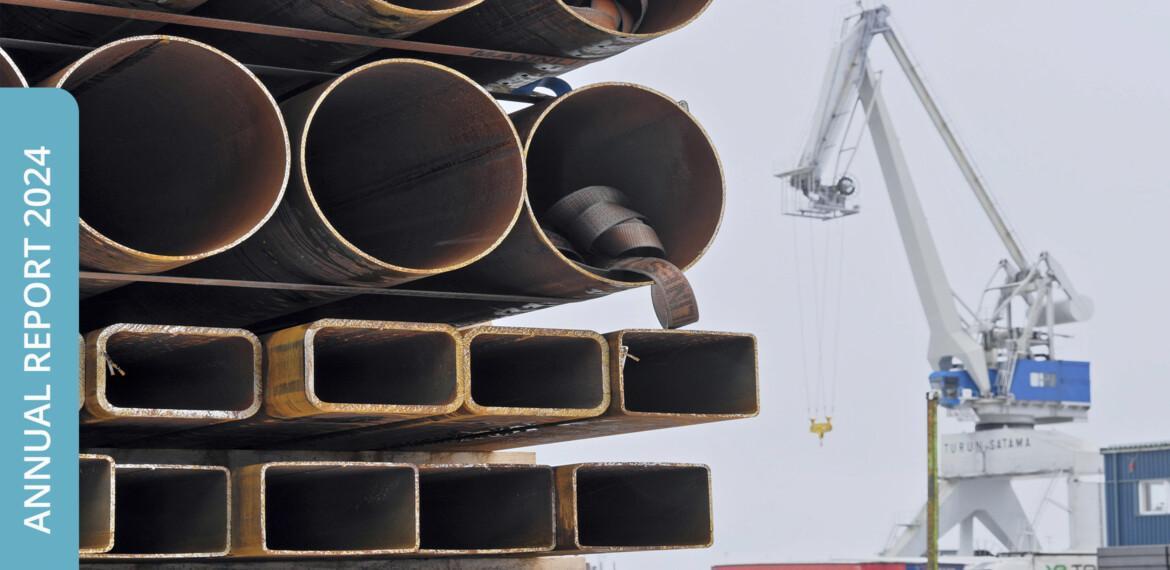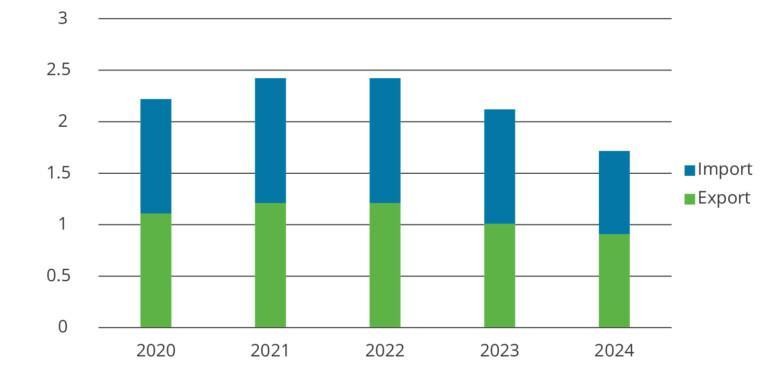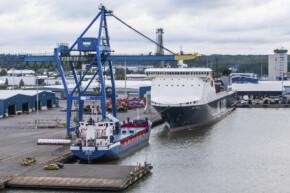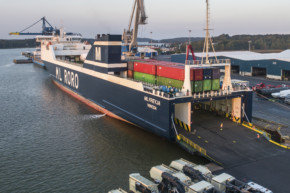Fast and cost-effective maritime route for cargo
For Finland’s foreign trade, the Port of Turku provides fast import and export connections to Scandinavia, the Baltic Sea region and Central Europe, efficient and reliable port services as well as diverse logistic services ranging from storage to value-added services.

The Port of Turku acts as Finland’s gateway to the West and helps to safeguard security of supply for Finnish society.
Functional connections to our most vital market areas
Our primary route for cargo traffic offers unit cargo the fastest sea route from Turku to Stockholm and, from there, on to other destinations in Scandinavia and Western Europe. Together, Viking Line and Tallink Silja offer three daily departures to Stockholm in accordance with a timetable that is ideal for the driving time regulations for HGV transports.
Other regular liner traffic at the port is provided by Mann Lines and Baltic Line. Mann Lines transports ro-ro cargo along the route Turku–Bremerhaven–Harwich–Rotterdam–Cuxhaven–Paldiski–Turku as well as offering additional connections to ocean lines. Baltic Line’s route, using lo-lo and side port vessels, runs from Turku to Norway and offers further connections to the Baltic countries, Poland and Denmark. The lines of both shipping companies have long been important for both their customers and the Port of Turku, and their development has been stable.
2024 was a satisfactory year for cargo traffic
In 2024, cargo traffic at the Port of Turku reached the level of the previous year, with the total volume of cargo rising to approximately 1.7 million tonnes. Of this, imports accounted for slightly over half, as import traffic increased by slightly more than 11 per cent and exports dropped by around six per cent.

In total, the volume of cargo traffic was positive despite the fact that, at the same time, the volumes of cargo passing through all Finnish ports collectively decreased.
The volume of cargo traffic might have been even higher without the strikes in the spring of 2024 and vessel maintenance shutdowns. Finnlines’ withdrawal from Turku liner traffic also had its own impact. Prior to that, Finnlines had opened a new line from Turku via Travemunde to Rostock in August 2024, but the traffic ended already during the autumn. When the general economic situation and international events of the year are taken into account, the outcome achieved in cargo traffic can be considered to be satisfactory.
Moving ahead with new vessels, lines and green transports
The Finnish economy is forecast to turn upward slightly during 2025. The statistics from early 2025 show that new orders and production in industry are growing, which, if this trend continues, is likely to be reflected in the volume of foreign trade transports.
For the Port of Turku, these positive expectations are also reinforced by, for example, the entry of Mann Lines’ new vessel into traffic in the spring of 2025. The shipping company’s new ro-ro vessel is longer, more efficient and more ecological, all of which strengthens the competitiveness of the shipping company within the industrial transport market.
The Port of Turku also has ongoing discussions with various parties on the opening of new shipping lines in Turku. The negotiations are time-consuming, but Turku’s position as Finland’s gateway to the West would provide a far-reaching solution, as uncertainty about the security situation in the Baltic Sea remains strong. The longest negotiations have been with parties in Poland, where the market was last surveyed at the TransLogistica Poland fair in Warsaw in November.
During the summer of 2024, Viking Line began offering transport companies a new service in the form of a green corridor.
The service involves either Viking Glory or Viking Grace transporting cargo over the Archipelago Sea powered by LBG. The service has attracted a lot of interest from transport companies and their customers, and products from ketchup to steel are already being transporting along this green maritime corridor. Viking Line’s service marks the initiation of actions to fulfil the agreement signed between the Port of Turku, the Ports of Stockholm and Viking Line in February 2024 to realise the construction of a fossil-free green corridor between Turku and Stockholm by 2035.
The reforms also serve cargo traffic
The Ferry Terminal Turku project is also important for cargo traffic between Turku and Stockholm. After the construction work got underway in January 2025, the Port of Turku made it its mission to continue to ensure the smooth flow of cargo traffic throughout the construction period. To this end, collaboration with operators and transport companies will continue, and we will report quickly and clearly on the impacts and changes of the project, for example, as they affect HGV transports in the port area.
Truck traffic and its drivers are an important target group for the Port of Turku.
As one of our latest services, we have introduced a break room for HGV drivers in the West Harbour. The container, situated on Konttikatu street, has a break room where drivers can relax and refresh themselves between long journeys. The break room has a microwave and seating area, which offer the possibility to heat food and relax comfortably. The thermally insulated container also has modern toilet and shower facilities. The new break room complements the services of the port’s truck parking area.
Text: Kari Ahonen
Photo: Jarmo Piironen


